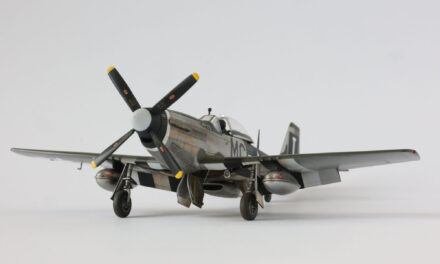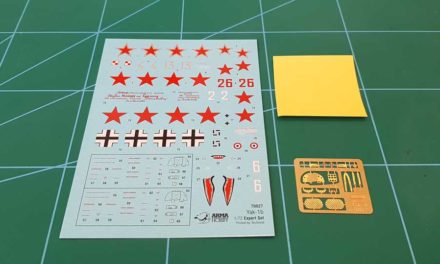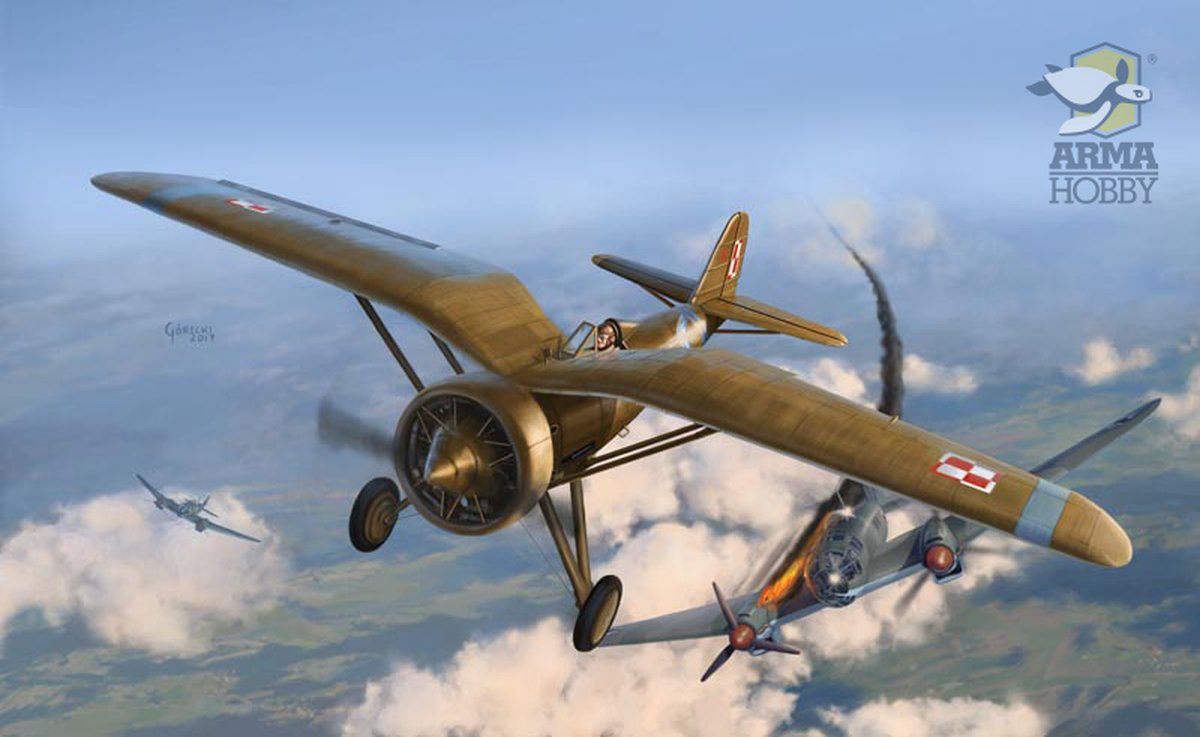 The main fighters defending the Polish skies against German and Soviet aggression in September 1939 were the PZL P.11c, but three squadrons, for lack of better equipment, had to go into battle on the older PZL P.7a.
The main fighters defending the Polish skies against German and Soviet aggression in September 1939 were the PZL P.11c, but three squadrons, for lack of better equipment, had to go into battle on the older PZL P.7a.
Although in September 1939 the ‘Seven’ was already severely outdated, when it entered Polish air force in 1932, they were the most modern fighters in the world! The all-metal monoplanes, with the reliable Bristol engine, had excellent performance, were pleasant to fly and the construction was robust and resistant to damage. Their designer, Eng. Zygmunt Pulawski, designed a truly outstanding aircraft that allowed Polish fighter aviation to be successfully modernised for several years. It was also a great export success – PZL factory sold abroad many machines with a gull wing, the P.11 and P.24, which were a direct development of the P.7.
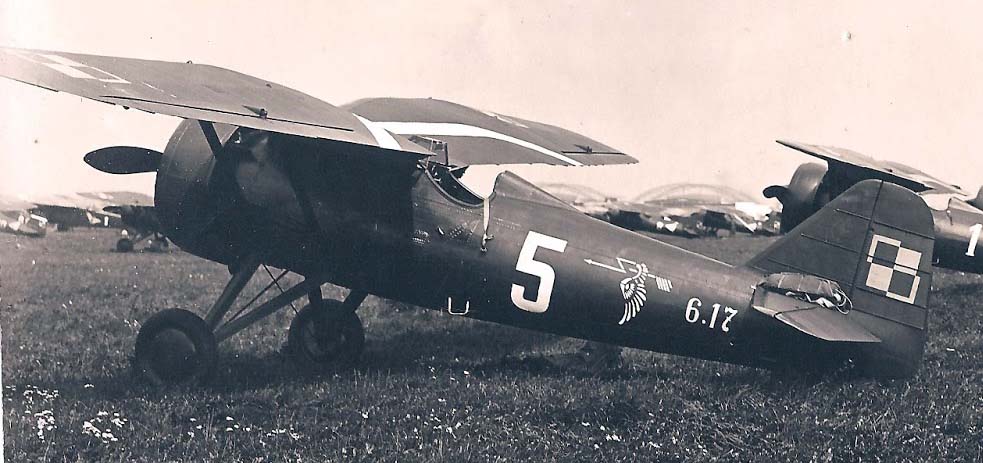
During the September battles, the ‘Sevens’ were no longer suitable as fighters, so they were mostly used for auxiliary, reconnaissance operations. Despite this, however, they fought some spectacular air battles and even achieved victories!
123rd Fighter Squadron
The 123rd Fighter Squadron from Kraków was incorporated into the Pursuit Brigade defending Warsaw. Its most famous aircraft is ‘5’ flown by Erwin Kawnik, who managed, together with its colleagues, to shoot down a Heinkel 111 bomber.
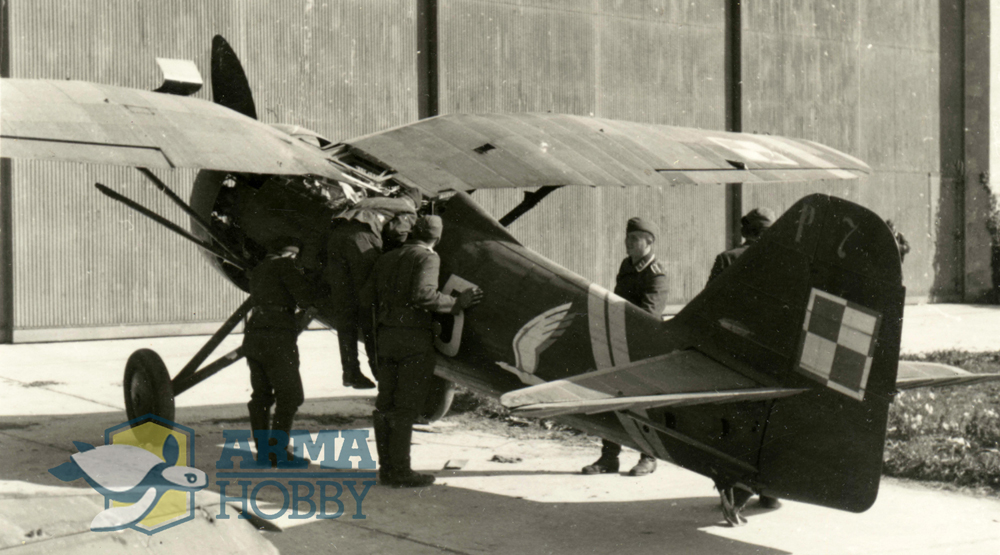
151st Fighter Squadron
The 151st Fighter Squadron from Wilno/Vilnius was assigned as air support to the Independent Operational Group ‘Narew’. There it performed the typical tasks of army aviation: covering its own troops, escorting bombers and reconnaissance of the enemy. This is how the pilots of the PZL P.7 met the tanks of Guderian’s corps!
PZL P.7a of 2nd Lieutenant Zygmunt Kinel, 151. Fighter Squadron, 1939

162nd Fighter Squadron
The Lwów/Lviv 162nd Fighter Squadron was assigned to the ‘Łódź’ Army, and proved to be the most effective squadron equipped with the PZL P.7a. As assigned, it operated in the vicinity of Łódź, where for several days it repulsed, together with its sister 161st Squadron, the German attacks on this important Polish city. And after being redeployed to the east, the pilots of the 162nd also clashed with Soviet aviation!
PZL P.7a – “City of Lwów” squadron against Wehrmacht spearhead
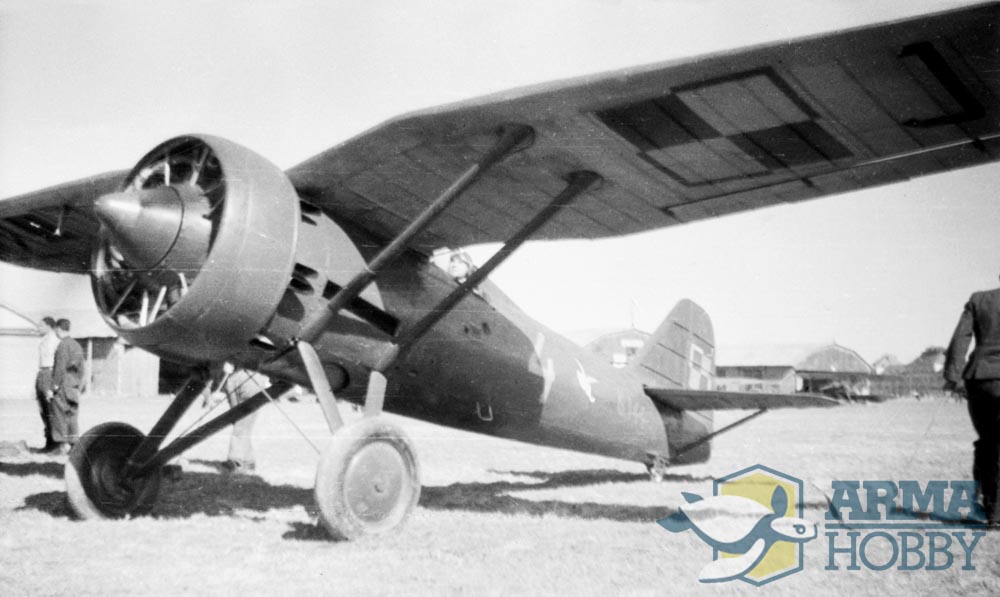
PZL P.7a model kit
Although Arma Hobby’s PZL P.7a in 1/72 scale is one of our oldest kits, which we designed without much experience, it is still a nice kit, enjoyed by modellers.
See the contents of the 1/72 scale PZL P.7a box:
Many beautiful models were built using this kit.
Superdetailing level master
Mikołaj75, known for his very advanced modeling projects, took the P.7a and heavily superdetailed it:
Conversion into PZL P.11a
Wojtek Figurski converted a P.7a into a PZL P.11a, using an engine from a P.11c kit:
What-if. “Seven” in US Navy?
There is also no shortage of ‘what-if’ models – a very impressive ‘seven’ in a fictional US Navy livery was built by Wojtek Werpachowski:
Aeroplane camouflage and markings
For more on PZL P.7a camouflages and markings, wartime and pre-war, as well as in Romanian colours, see Wojtek Bułhak’s article:
Modeller, son and father of a modeller. Loves digging through references and analysing old photographs. He builds aircraft, ship and vehicle models, the older the better. He has a weakness for Polish equipment, but does not despise the RAF, FAA and Great War topics. A journalist by training.
This post is also available in:
 polski
polski


